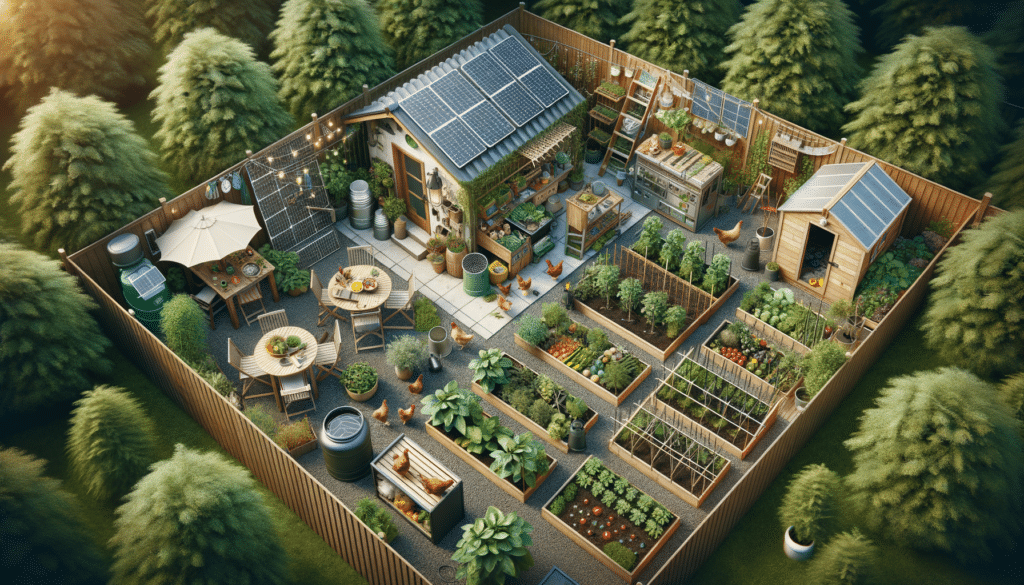Introduction to Self-Sufficient Backyards
The increasing interest in sustainable living has led many to explore the concept of a self-sufficient backyard. This approach not only enhances the functionality of outdoor spaces but also promotes environmental consciousness and reduces dependency on external resources. By transforming backyards into productive zones, individuals can enjoy fresh produce, renewable energy, and efficient water usage. This article delves into the essential components and benefits of creating a self-sufficient backyard.
Designing an Off-Grid Gardening Setup
Off-grid gardening is a pivotal aspect of a self-sufficient backyard. It involves cultivating plants without relying on public utilities, thereby fostering independence and sustainability. Key elements of an off-grid garden include:
- Soil Health: Healthy soil is the foundation of any successful garden. Implementing composting techniques enriches the soil with nutrients, encouraging robust plant growth.
- Water Management: Rainwater harvesting systems are invaluable for off-grid gardens. By collecting and storing rainwater, gardeners can ensure a consistent water supply during dry spells.
- Energy Sources: Solar panels can power garden tools and lighting, reducing reliance on electricity from the grid.
These components create a resilient gardening setup that thrives independently, providing a bountiful harvest while minimizing environmental impact.
DIY Backyard Homestead: Building Blocks for Independence
Establishing a DIY backyard homestead involves integrating various elements to create a cohesive and self-reliant environment. Essential features include:
- Food Production: Vegetable gardens, fruit trees, and herb patches form the core of food production in a homestead. Raised beds and vertical gardening can maximize space utilization.
- Animal Husbandry: Keeping chickens or rabbits can provide eggs and meat, contributing to a balanced diet.
- Renewable Energy: Incorporating solar or wind power systems can supply energy for household needs.
By combining these elements, a backyard homestead can significantly reduce living costs and enhance self-sufficiency.
Innovative Tools and Structures for a Self-Sufficient Backyard
Modern technology and traditional practices blend seamlessly to support self-sufficient backyards. Some innovative tools and structures include:
- Greenhouses: Extend the growing season and protect plants from harsh weather conditions.
- Compost Bins: Turn kitchen and garden waste into nutrient-rich compost, reducing waste and enhancing soil health.
- Water Storage Tanks: Store harvested rainwater for irrigation and other uses.
These tools and structures facilitate efficient resource management, making self-sufficient living more attainable.
Conclusion: Embracing Self-Sufficiency in Your Backyard
Creating a self-sufficient backyard is a rewarding endeavor that offers numerous benefits. It fosters a deeper connection with nature, reduces reliance on external resources, and promotes sustainable living practices. By incorporating off-grid gardening, DIY homestead elements, and innovative tools, individuals can transform their outdoor spaces into productive and resilient environments. This shift towards self-sufficiency not only enhances personal well-being but also contributes positively to the environment, paving the way for a more sustainable future.


